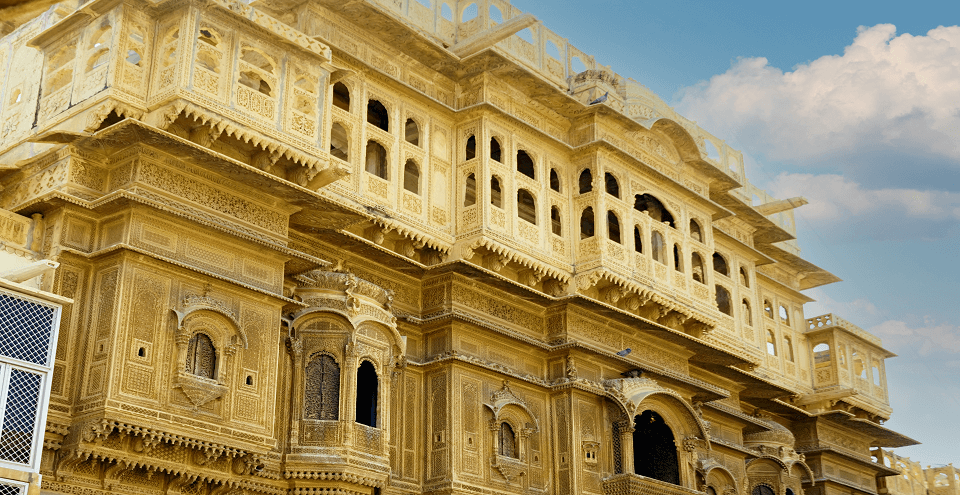ATTRACTIONS & PLACES TO VISIT AND EXPLORE IN JAISALMER

LIGHT & SOUND SHOW AT GADISAR LAKE
Laser Water Show at Gadisar Lake is one of the first and largest Laser Water Show having water screen projection mapping using 3-chip DLP projectors of 25,000 lumens. Show depicts story of founders of Jaisalmer city, Jaisalmer fort, attacks of invaders on the fort & sacrifice of brave Rajput to save their land, glimpses of other tourist locations in Jaisalmer region e.g. Tanot Mata Temple, Lodruva Temple, Laxminarayan Temple, Longowala war scenes, etc.

JAISALMER FORT
The Jaisalmer Fort also goes by the name Sonar Quila (Golden Fort) as it rises from the desert itself and seems to become one with the golden hues of the sand. The setting sun adds its own magic and shrouds the fort with mystique. The fort is constructed in the classic style of the royals by local craftsmen. This fort is a world heritage site and forms an important plot point in one of Satyajit Ray’s famous Feluda stories and corresponding movie, Sonar Kela (The Golden Fortress).

JAISALMER GOVERNMENT MUSEUM
Established by the Department of Archaeology and Museums, it is a prime attraction for tourists visiting Jaisalmer. The most striking display is the trophy of Rajasthan‘s state bird Godawan (the great Indian bustard). Traditional household items, rock-cut crockery, jewellery and statues from the 7th and 9th century AD displayed here are remnants of the city’s rich cultural heritage.

NATHMAL JI KI HAVELI
Two architect brothers built Nathmal Ji Ki Haveli in the 19th century. They worked on the haveli from two sides and the outcome is a beautiful blend of the symmetrical construction. Miniature style paintings and mighty tuskers carved out of yellow sandstone are used for decoration.

DESERT NATIONAL PARK
The Desert National Park displays the best of the Thar desert’s ecosystem and its varied wildlife. The Park is formed of undulating sand dunes, jagged rocks, dense salt lake bottoms and inter-medial areas. Various species of animals such as black buck, chinkara and desert fox inhabit the Park. The highly endangered Great Indian Bustard, one of the world's heaviest flying birds, can also be seen here. In winter, the park hosts an incredible variety of migratory raptors such Himalayan and Eurasian Griffon Vultures, Eastern Imperial Eagle, and the Saker Falcon.

JAISALMER WAR MUSEUM
“If you ate today, thank a farmer, and if you ate in peace, thank a soldier!” Our military and defense forces spend their days facing perils and hardships, so the citizens of India can sleep peacefully. While we all appreciate and hold respect for all they do for us, the Indian Army has commemorated the sacrifices of their soldiers in a beautiful display at this war museum, situated at the Jaisalmer military base. This exhibit is primarily to pay respect to all the soldiers who took part and lost their lives in the 1965 India-Pakistan war and the 1971 Longewala battle. A visit to this museum lets you see a number of captured tanks and other memorabilia from the battle.


